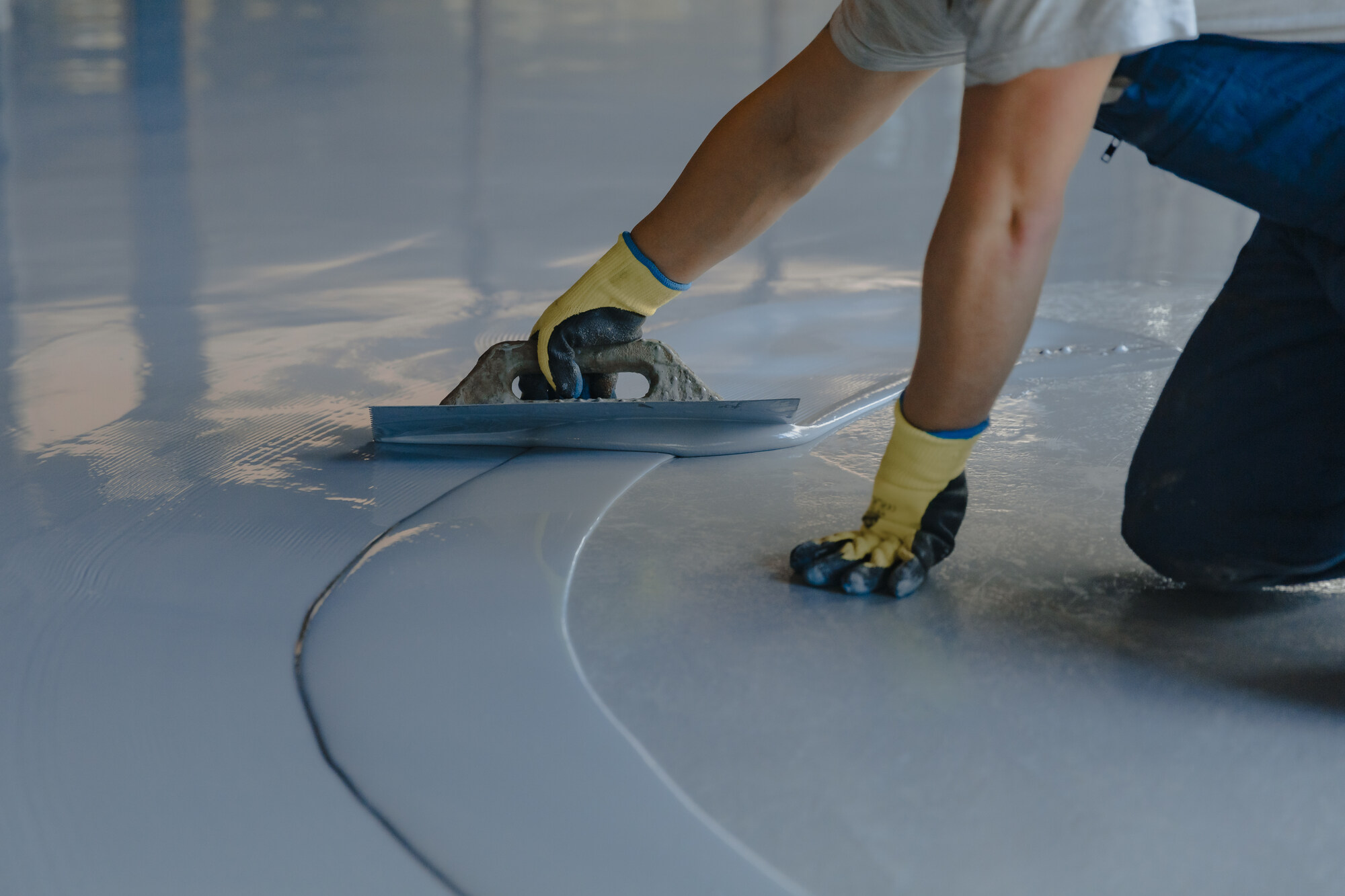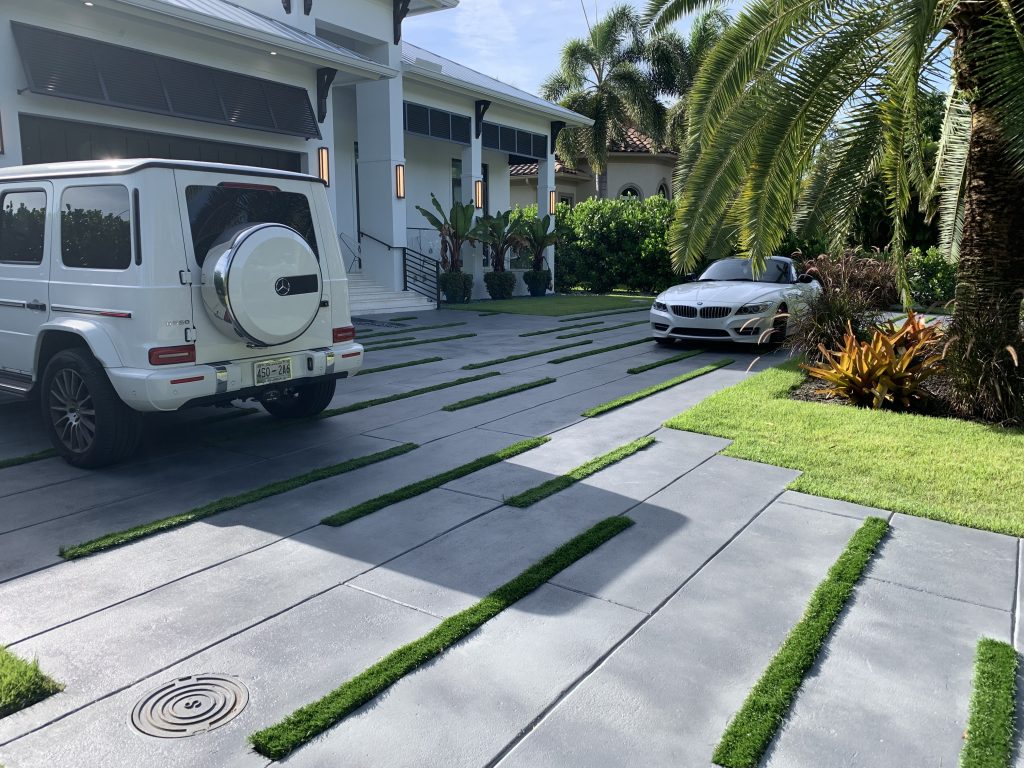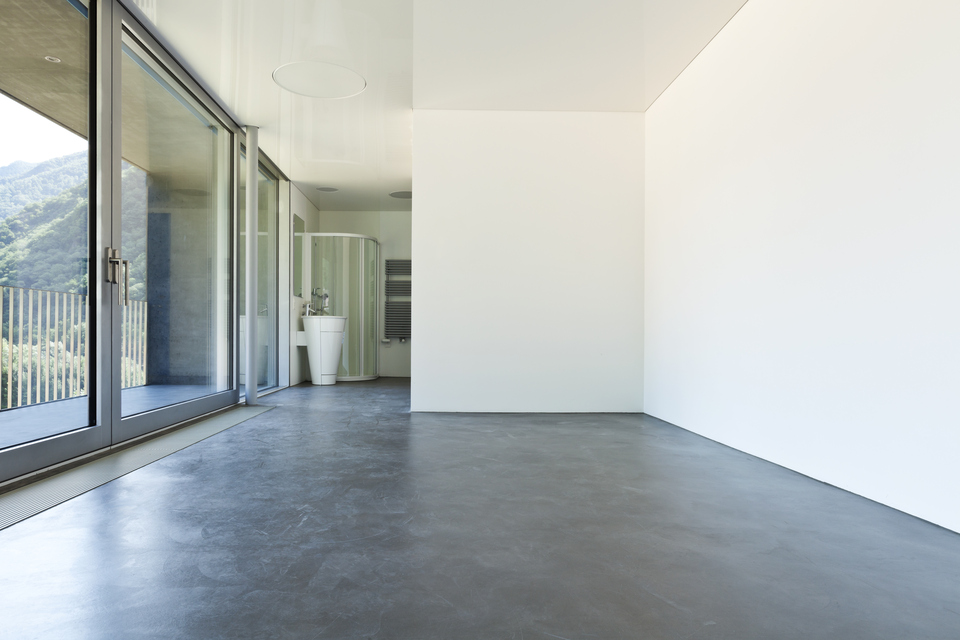
Quality Flooring Solutions in Southwest, FL
At SKS Flooring Solutions, we offer top-quality flooring solutions to meet all your needs in your local area. Whether you require installation, repair, or maintenance services, our experienced team is here to provide you with exceptional results. Contact us today for a free consultation, and let us transform your space with beautiful and durable flooring.
Flooring Solutions Experts
Providing top-notch flooring solutions, we specialize in a range of services including epoxy flooring, urethane cement slurry, polished concrete, polishable overlay, dyed concrete, decorative concrete overlay, and concrete prep & moisture mitigation. Our dedicated team ensures exceptional craftsmanship and customer satisfaction every step of the way.


Why Choose Epoxy?
There are many options when it comes to epoxy flooring such as neat (solid color), flake or chip, quartz and metallic.
Epoxy flooring systems are a high build, self-leveling, pigmented, and resinous flooring system. They are engineered for commercial and industrial applications. This system is intended for floors subject to medium to high traffic, such as forklift traffic. Epoxy flooring systems create a highly durable finish making them significantly more desirable. It is easy to clean and maintain while providing resistance to wear abrasion, petrochemicals, and contaminants.


Urethane Cement Slurry
Urethane cement slurry is a three-component urethane floor coating applied with a gauge rake at a thickness between 1/8″ to 5/8″. This is our most durable floor application. It is resistant to hot and cold and a variety of chemicals. This system is typically finished with a full sand broadcast for slip resistance, then top-coated with a urethane cement slurry topcoat. This system can also be finished with colored Quartz or flake broadcasted and top coated with polyaspartic. This system is typically used in:
Food processing plants
Wet and dry process areas such as breweries, wineries, and distilleries
Freezers and coolers
Thermal shock areas
Laboratories and chemical process plants
Warehouses and storage areas
Why Choose Urethane
Cement Slurry
Thermal shock-resistant, urethane cement slurry (broadcast optional) is an extremely durable flooring system made of three components. This product is available in various colors and is CIFA and FDA compliant for use in food manufacturing, packaging and distribution facilities. In addition to its ability to withstand daily forced steam cleaning, this flooring system is resistant to bacterial growth, making it an ideal flooring option for food and beverage manufacturing and serving facilities. The flooring system is non-slippery when wet and can withstand heavy traffic exposure.
It can withstand daily steam cleanings or pressure washing due to its ability to expand and contract at the same rate as the concrete beneath it. Using urethane resin in combination with Portland cement and other binders, this coating creates a stronger mechanical bond than epoxy.


Polished Concrete
Polished concrete flooring is an amazing wax-free option. The correct equipment and experience allow concrete polishing contractors to grind concrete surfaces to a high-gloss finish, whether it is old or new. With concrete’s superior durability and performance, retail stores, commercial warehouses, office buildings, and even homeowners are attracted to these smooth, high-luster floors.
Polished concrete is a multi-step process where concrete is mechanically grounded, honed, and polished with bonded abrasives to cut the concrete floor surface. It is refined with each cut to achieve a specific level of appearance. The sheen can range from a semi-gloss up to a high gloss finish. Stencils and dye can be added for a personalized floor.
Why Choose Polished Concrete
Utilizing advanced technologies, polished concrete can convert a large selection of finished surfaces into smooth, highly durable, and stunning glossy surfaces.
Polished concrete is a cost-effective alternative to carpeting, vinyl, wood, natural stone, and tile. It is easy to clean and resistant to mildew, mold, mites, and other common allergens. You can resurface and polish concrete in almost any condition to give your space a major upgrade for a fraction of the cost of other flooring materials. The top layer of the floor can be ground down to meet your specifications, and then you can finish it with dyes, stencils, and decorative patterns, or leave it a natural gray color with your desired sheen.


Polishable Overlay
Using polished concrete for flooring is no longer limited to those looking for a super contemporary industrial look. With new finishes and techniques, this material is now being used for various interior schemes and those seeking a sleek, easy-to-keep floor.
Polished concrete flooring is created by adding chemical densifiers to concrete – cement, gravel, sand, and water. The densifiers fill in the pores and holes in the concrete. Diamond polishing tools are then used to grind down the poured concrete progressively finer until the desired sheen and smoothness are achieved.
Why Choose Polished Concrete
Polished concrete is a versatile material that is easily customizable in its appearance by using striking aggregates, Quartz, and colors to create a unique and sophisticated atmosphere. Its reflective surface provides an evocative quality under a light that can be used for numerous applications.
Polished concrete is still mainly used for interior floors, but architects have pushed the limits for years, using it even for feature walls, patio floors, and large exterior panels.
Polished concrete can be accomplished in several ways, from the least expensive method of grinding and sealing to hone concrete, which uses a penetrating sealer to produce a reflective surface. One of the main reasons for using polished concrete is that it is easy to maintain. It is easy to clean and durable, and a smooth, hard surface makes it difficult to damage. Even though concrete is susceptible to cracking through moisture and settlement, patching materials can mask these imperfections.


Dyed Concrete
A concrete dye is a translucent, penetrating color solution. Concrete does not react chemically with stains, unlike acid-based stains. Instead, they contain very fine pigmentation agents that penetrate the surface deeply.
There are water-based and solvent-based dyes, each of which has unique characteristics. Although dyes tend to produce more uniform and predictable tones than stains, they can still produce interesting variations in color.
Concrete floors are commonly colored with dyes both in commercial and residential settings. Dyeing is used more often by decorative contractors to alter color palettes. The colors of dyes are more vibrant than those of most stains, such as red, yellow, orange, purple, and cobalt blue. It is easy to mix the colors on the job site or dilute them to create a variety of other shades.
Why Choose Dyed
Concrete Floors
Dyed concrete floors are becoming increasingly popular in the commercial industry because of their extensive benefits. These floors have become a great choice for nearly any building or renovation project due to their cost-saving advantages, durability, and low maintenance. The look and aesthetic appeal of dyed concrete floors can also be enhanced by adding decorative applications and elements.
Using the right design and installation methods, concrete flooring can give your floors a similar look as to far more expensive options such as granite, marble, travertine, sandstone, flagstone, and slate. This will give your floors an elegant and stylish look at an affordable price.


Decorative Concrete Overlay
Decorative overlays refer to various products and systems that provide a decorative finish over an existing surface. It is vital to prepare the floor surface properly before installing a concrete overlay. Decorative concrete overlays are typically applied in two to four coats by hand trowel, roller spray, squeegee, or notched squeegee and back roll and can be very thin as 1/16th of an inch or up to 1/2 inch.
When concrete flooring needs updating, overlays are a popular way to revitalize the surface without removing or replacing the flooring. It’s a simple, cost-effective way to achieve the look of new, textured flooring without the hassle and expense of a full renovation. This improvement works best on solid, clean, and secure subfloors.
Why Choose Decorative Overlays
Combine the durability and strength of concrete with polymer resin concrete overlays’ unique texture and appearance. Concrete overlays can refresh worn concrete floors, whether you are remodeling your home to make a unique space or simply increasing your home’s value.
With the simple application process of a concrete overlay, you can hide many imperfections and give your floors a whole new look. Concrete overlays come in various styles similar to stone, marbling, or pavers, making them a non-invasive, affordable way to update a space.
The concrete overlay is considered to be very inexpensive and seals the existing concrete floor giving it the durability you desire with minimal maintenance requirements.


Concrete Prep &
Moisture Mitigation
The best way to start a project is with good concrete floor preparation. This concrete preparation is intended to restore or improve the serviceability of the floor.
The floor grinding process utilizes ride-on and walk-behind machines and handheld grinders to further prepare concrete for receiving a new flooring system. A thin layer of material is removed from the concrete surface in grinding. As well as flattening and smoothing surfaces, it removes paint, coatings, mastics, polyurethane, epoxies, and adhesive residue.
Multiple rotating discs are used in floor grinding machines to remove paints and concrete coatings from large, open spaces and to texturize the surface of the concrete. Grinding enhances the bonding properties of newly applied resinous flooring by raising the concrete surface profile.
Why Choose Concrete Prep
Concrete Prep in the commercial setting can produce a smooth and tailored finish through the scouring and cleaning of the surface. It is usually used to remove thin layers of paints, mastics, and coatings from concrete surfaces, smoothing out blemishes and priming the surface for the next coating.
Many types of flooring can be applied over a concrete prep, such as carpet, tiles, veneers, and floorboards. To ensure that these floors adhere properly to concrete, the surface needs to be properly prepared.
Upon completion, the slab must be patched, any holes and gaps must be filled, debris must be cleared away, and imperfections in the slab must be corrected to ensure it is leveled.


